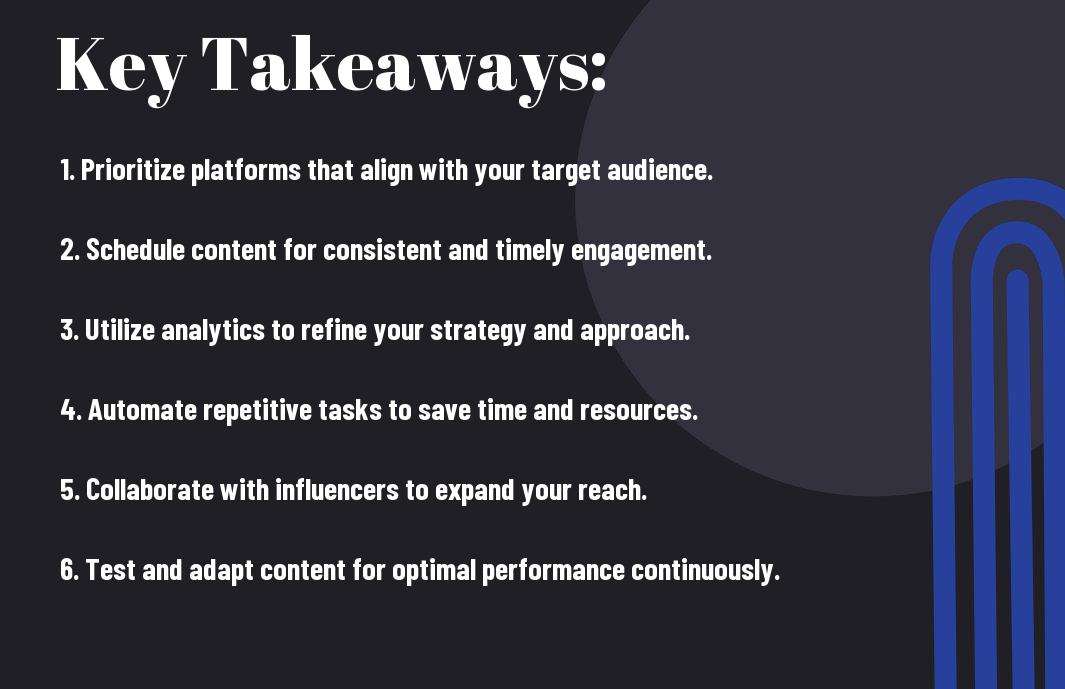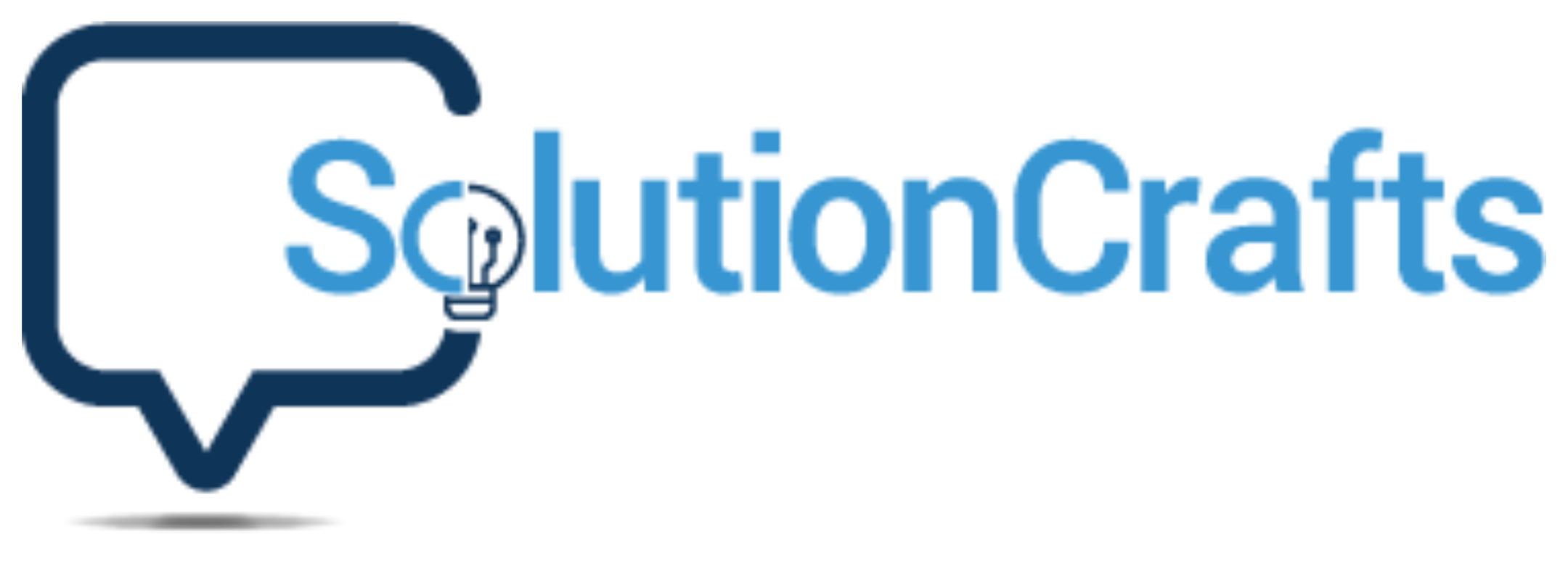Many organizations struggle to effectively manage their social media presence, often leading to missed opportunities for engagement and growth. By leveraging the right tools and techniques, you can maximize your impact and streamline your efforts across platforms. In this post, you'll discover actionable strategies that enable you to enhance your outreach, connect with your audience, and ultimately, scale your social media efforts. Let's dive in and explore how you can transform your social media strategy for the better.

Understanding Your Audience
To effectively scale your social media efforts, you must first understand your audience. This involves not only knowing who they are but also grasping their interests, behaviors, and preferences. By gaining deeper insights into their needs and challenges, you can tailor your content to resonate with them, increasing engagement and fostering loyalty. An informed approach helps you allocate your resources wisely and make data-driven decisions that will enhance your social media strategy.
Identifying Target Demographics
For effective social media engagement, you need to identify your target demographics. Start by analyzing the data available through your social media platforms, which may include age, gender, location, and interests. This information will help you create detailed buyer personas, allowing you to customize your content and approach to meet the specific preferences and needs of your audience. Utilizing this knowledge will position your brand effectively within the market and enhance your outreach.
Engaging with User Feedback
Audience feedback is instrumental in shaping your social media strategy. By actively engaging with comments, surveys, and direct messages, you can gather insights that reveal what resonates with your followers. This interaction not only helps you refine your content but also builds a relationship, making users feel valued and understood. Acknowledging their opinions can lead to increased trust and long-term loyalty, which are vital for sustained growth.
Understanding how to engage with user feedback can significantly impact your social media success. Responsive communication shows that you care about your audience's thoughts and opinions. Actively seek their input through polls or questions and promptly address their concerns or suggestions. This not only fosters a sense of community but also empowers users to participate in shaping your brand voice. Ultimately, by valuing their feedback, you cultivate a positive relationship, ensuring that your content remains relevant and impactful.

Choosing the Right Platforms
You need to select the social media platforms that align best with your business goals and target audience. Each platform offers unique opportunities for engagement, so understanding where your audience spends their time is imperative for maximizing your impact. An optimal strategy involves analyzing various platforms to find the right fit for your brand's message and products.
Analyzing Platform Demographics
Among the first steps in your selection process is examining the demographics of each social media platform. Different platforms cater to varying age groups, interests, and user behaviors. Understanding these demographics allows you to pinpoint where your target audience is most active.
| Platform | Key Demographics |
| Wide age range, diverse interests | |
| Primarily 18-34 years old | |
| Real-time engagement, trending topics | |
| Professional networking, B2B audiences | |
| TikTok | Primarily Gen Z and Millennials |
Aligning Content Types with Platforms
Right now, each social media platform thrives on specific types of content that resonate with its user base. For example, video content performs exceptionally well on TikTok and Instagram, while longer articles and thought leadership pieces are better suited for LinkedIn. Tailoring your content to suit these preferences will enhance engagement and visibility.
- Visual Posts for Instagram and Pinterest
- Short Videos for TikTok and Instagram Reels
- Professional Insights on LinkedIn
- Quick Updates on Twitter
- Community Engagement on Facebook
After investigating which content types align best with your chosen platforms, you can strategically plan ahead to maximize your reach and effectiveness.
| Content Type | Best Platforms |
| Videos | Instagram, TikTok |
| Blog Posts | Facebook, LinkedIn |
| Infographics | Pinterest, Instagram |
| Polls & Questions | Twitter, Facebook |
| Professional Articles |
The selection of platforms and the alignment of content types play a key role in the success of your social media strategy. Focus on creating high-quality, engaging content tailored to the specific audience of each platform to foster authentic connections. After all, understanding your audience gives you the upper hand in delivering content that matters.
Content Strategy for Scaling
Many businesses overlook the importance of a robust content strategy when scaling their social media efforts. Developing a clear plan allows you to create focused, impactful content that resonates with your audience. By aligning your content with your brand goals and audience preferences, you can significantly enhance engagement and drive results across your social media platforms.
Creating Compelling Content
Beside understanding your audience, it's vital to craft content that captivates and inspires action. Focus on storytelling, visual elements, and authentic messaging to create an emotional connection with your followers. Quality content not only helps you stand out but also fosters trust and loyalty among your audience.
Content Calendars and Scheduling
Against the backdrop of fast-paced social media landscapes, maintaining a content calendar is vital for consistency. It streamlines your efforts, ensuring that you post regularly and strategically. By mapping out content in advance, you can allocate resources efficiently and respond to trends timely.
A well-structured content calendar is key to maximizing your social media impact. It helps you organize diverse posts, plan themed content, and vitally balance promotions with engagement posts to keep your audience interested. Additionally, scheduling tools allow you to automate your posts, providing freedom to focus on other aspects of your business. This means you can strategically align your content with important dates or events, ensuring that your messaging is timely and relevant. Make sure to include a mix of formats such as videos, blogs, and infographics to keep your audience engaged while enhancing your brand's visibility and reach.

Tools for Enhanced Efficiency
Not having the right tools can hinder your social media efforts significantly, preventing you from achieving the desired impact. Leveraging efficient tools can save you time, streamline your processes, and enhance your overall performance. In this section, you'll discover various resources designed to optimize your social media strategy and help you scale effectively.
Social Media Management Tools
After selecting the right platforms for your social media strategy, consider incorporating social media management tools. These tools allow you to schedule posts, monitor engagement, and streamline communication across multiple platforms from a single dashboard. This not only saves time but also ensures that you maintain a consistent presence that resonates with your audience.
Analytics and Reporting Tools
Alongside management tools, analytics and reporting tools play a vital role in refining your social media efforts. These tools provide you with insights into your performance, helping you understand what works and what doesn't in real-time. Monitoring these metrics enables you to make informed decisions that can enhance your engagement and reach.
Further, analytics and reporting tools are invaluable for tracking your social media growth. You can identify trends and patterns in audience behavior, allowing you to pivot strategies quickly if needed. With in-depth reports, you can see the effectiveness of your campaigns, pinpoint areas that require improvement, and ultimately make data-driven decisions that enhance your overall social media strategy, ensuring a better return on your investment.
Leveraging Paid Advertising
Your social media strategy can gain significant traction through paid advertising. This approach amplifies your reach, allowing you to target specific demographics effectively. By investing in ads, you not only increase brand visibility but also have the potential to boost conversions and engagement, making it an crucial component of your overall marketing strategy.
Understanding Ad Formats and Options
Among the various ad formats available, including image, video, carousel, and story ads, it's vital to choose those that align with your goals. Each platform offers unique options—such as Facebook's Lead Ads or Instagram's Shopping Tags—that you can leverage to drive user engagement and conversions.
Budgeting and ROI Assessment
Before exploring into paid advertising, it's imperative to create a budget and assess your expected return on investment (ROI). This step ensures you allocate resources effectively while maximizing your ad spend's impact.
The foundation of effective paid advertising is solid budgeting and ROI assessment. You should outline a clear budget reflecting your overall marketing strategy while considering factors like audience size and competitive landscape. Analyzing performance metrics such as click-through rates, conversions, and customer acquisition costs will help you determine the effectiveness of your campaigns. Additionally, utilizing A/B testing can provide insights into what works best, enabling you to optimize your strategies and achieve higher returns on your advertising investment.
Building a Community
Now, to effectively scale your social media efforts, it's necessary to focus on building a thriving community around your brand. Engaging your audience is more than just posting content; it's about fostering relationships that promote loyalty and advocacy. You can dive deeper into strategies by checking out The Ultimate Guide to Scaling Your Social Media Content.
Encouraging User Interaction
After establishing a foundation, encouraging user interaction becomes vital for community growth. Ask open-ended questions, create polls, or host live events to invite comments and discussions. Your audience will feel more valued and involved when they have a voice in your brand narrative.
Utilizing Influencer Collaborations
Building partnerships with influencers can amplify your community reach and engagement. By collaborating with individuals who resonate with your brand values, you can leverage their audience for more robust community-building efforts. This not only enhances your visibility but also helps instill trust among potential followers.
In addition, aligning with influencers allows you to tap into their trusted relationships with their followers, broadening your exposure. Make sure to choose influencers whose values align with yours to maintain authenticity. This collaboration can drive engagement and foster a sense of community among their followers, translating into potential brand advocates. However, it's important to monitor these partnerships closely, as choosing the wrong influencer could negatively impact your brand's image.
Final Words
Taking this into account, effectively scaling your social media efforts requires a strategic approach, combining the right tools and techniques to enhance your impact. By leveraging analytics, scheduling platforms, and engaging content strategies, you can improve your reach and foster a deeper connection with your audience. Stay adaptive to new trends and continuously monitor your performance to refine your strategy. With dedication and the right resources, you can elevate your social media presence and achieve your goals.


